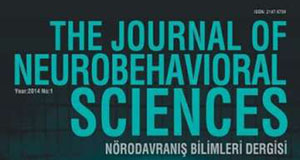
Üsküdar University NPİSTANBUL Hospital, searched the changes in the functional brain activities of Semazens during Sema Meditation. In the study conducted by Prof. Nevzat Tarhan and Prof. Cumhur Taş, changes occurring in the brain of a Semazen while they are in an ecstatic state were investigated for the first time in Türkiye. Tarhan said that “Today, number of studies, which research the effects of meditative exercise in the brain using functional neuroimaging techniques, are gradually increasing. Studying the effects of meditation in the brain is important because reaching a “meditative” mental state involves diffuse brain activations.”.
It was researched for the first time in Türkiye
At Üsküdar University NPİSTANBUL Hospital, Prof. Nevzat Tarhan and Prof. Cumhur Taş made remarks on the study where they investigate the changes in the functional brain activation of Semazens during Sema Meditation, correlation between neuronal activities and affect state.
“Information obtained in previous studies were not sufficient”
Noting that previous studies suggest that the experience of the meditator affects the strength of the brain activation, Prof. Nevzat Tarhan said that “Because experienced meditators may need less cognitive effort to reach the ecstatic state. Despite this, our knowledge about the associations between emotional states of the meditators and activated brain areas during meditation remains unknown.”.

Semazens imagined the Sufi whirling in the MRS device
Tarhan stated that this study was carried out with 14 male Semazens in the light of this information and said that “All Semazens they mediated in the MRI while they were imagining Sufi whirling. In the opposite of this situation, active control condition was applied to detect the specific brain areas. Affect state and psychological symptoms of the participants were collected and it was created with aim to compare fMRI analysis, statistical parametric mapping, meditation and control conditions. As a result, an activation especially in left anterior cingulate cortex and left orbitofrontal areas was observed.”. “There is no such study that investigates the relation between the correlation of neuronal activity of Sema Meditation and neuronal activations and psychological features of meditators.”.
Prof. Nevzat Tarhan stated that “Despite previous studies highlighting the experience of the meditators as a predictor of brain activation, we found that affective state may also be an important factor that may facilitate emotion regulation and cognitive monitoring in the brain.”. Tarhan emphasized that these findings may also explained the effects of meditation from psychological and emotional wellbeing perspective.
Tarhan made statements that “Some traditional focus-based meditations rooted in Eastern culture have their unique philosophy that ultimately affects the practitioner’s daily functioning in life, and Sufi Meditation may be considered to be one of these. Sufism dominates the individual’s ego (i.e., self- nefs), balancing the mental and physical experiences and creating inner harmony (Geoffroy, 2010). Sufism contributes to the regulation of people's cognitive ego stage and transforms their behavior into a more positive one while calming their mood. To date, there are no studies investigating the neuronal correlations of Sema Meditation and the relationship between neuronal activations and psychological characteristics of the person applying meditation.".
It is important to investigate the effects of meditation on the brain
Noting that the concept of meditation refers to quite a variety of spiritual practices and that this concept includes techniques that encourage sudden relaxation and aim to develop well-being and calmness as a long-term goal, Tarhan said, "Sufi Semazens, which are at the center of Sema Meditation, are a physically active form of meditation performed by whirling dervishes of Mevlevi for spiritual purposes. Today, an increasing number of studies are investigating the effects of meditation on the brain using functional neuroimaging techniques. It is important to investigate the effects of meditation on the brain because reaching the cognitive 'meditative' state involves broad brain activation.".
Not only the techniques used, but also experience has an effect on the brain
Emphasizing that studying such activations is crucial in understanding the more fundamental issues related to the regulation of cognitive and affective states, Prof. Nevzat Tarhan said, "This issue can become more difficult when it is expected to take place during Sufi meditation. Overall, fMRI studies meditation studies have found increased activation in areas of the brain involved in reward processing and emotion regulation, including the orbitofrontal cortex (OFC), cingulate cortex and thalamus areas. Moreover, active patterns in the brain differed in several ways depending on the type of meditation.".
Prof. Nevzat Tarhan said, "Not only the techniques used during meditation, but also the experience of the meditator has an effect on the activation patterns in the brain. The activation of the brain in the ACC and DLPFC areas is explained by the fact that meditation in particular requires self-focused attention. This focus is achieved by ignoring distracting stimulants, actively monitoring one's own mental and cognitive processes, and activating attention control. According to this explanation, it can be concluded that changes in activity in these regions of the brain can interfere with the quality of meditation, which in turn will have implications for the emotional and behavioral benefits of meditation.".
Those who see meditation as troublesome may be less likely to benefit from its positive effects
Despite the data obtained, the relationship between the emotional and behavioral characteristics of meditators and the activations in their brains during meditation is still unknown, Üsküdar University Faculty of Medicine Department of Psychiatry Instructor Prof. Cumhur Taş said that "Investigating this issue is very important in terms of revealing the neuronal basis of the positive and relaxing moods of the meditator. Moreover, the relationship between the practice of meditation and an individual's psychological state has been the subject of research in a small number of studies. The ultimate goal of this study is to investigate regional brain activations during Sufi Meditation performed in an MRI scanner. Also, we aimed to consider whether activated brain regions correlate with the emotional states of people who practice Sema meditation in this study.".
Taş continued his words as follows:
"Based on our goals, there are two hypotheses in this study: Firstly, we predicted that Sema Meditation could apply significant brain activations related to self-focused attention, such as ACC and DLPFC, in line with previous studies. Secondly, the strength of these activations can be correlated with the emotional program of the people who practice the meditation. Therefore, those who see meditation as something more troublesome can be associated with less benefit in terms of the positive effects of meditation.".
"Meditation can be perceived as a self-stimulating reward condition"
Noting that their hypothesis was partially confirmed according to the results, Prof. Nevzat Tarhan said that "We found significant activations during meditation in ACC compared to the control condition. Moreover, this study showed a relationship between neuronal efforts during meditation and the psychological state of Semazens. Especially, participants with greater ACC activation showed fewer positive effects in this study. In addition to the ACC, the OFC region was significantly activated during meditation. OFC is primarily concerned with reward expectation and decision making. In fMRI studies, OFC activation has been shown to be associated with the values of both social and monetary rewards. OFC activations have been demonstrated in previous neuroimaging studies on meditation, and this finding suggests that meditation may be perceived as a self-stimulating reward condition.".
Tarhan concluded his words as follows:
"In conclusion, this study is the first to investigate the brain correlations of Sema Meditation. In addition to the activations in ACC and OFC, we also found that activations in ACC can reduce the impact of the daily positive mood states of the whirling dervishes. More long-term research is needed to further investigate the behavioral effects of meditation and to reach more definitive conclusions. This is also important in understanding the role of ACC and related network activity during Sufi Meditation practices such as the whirling dance of Semazens."





